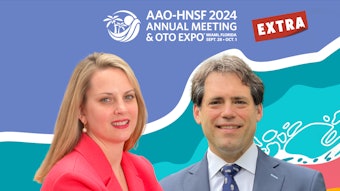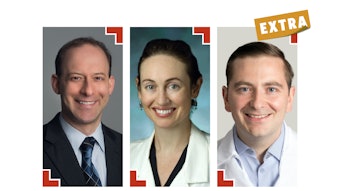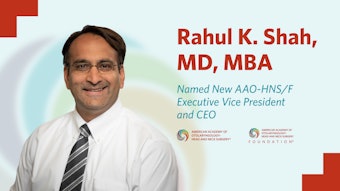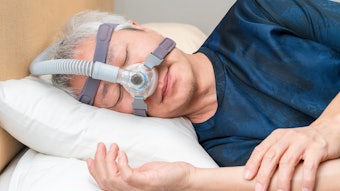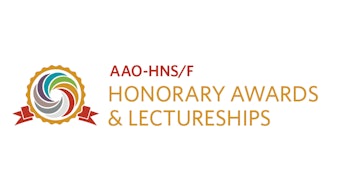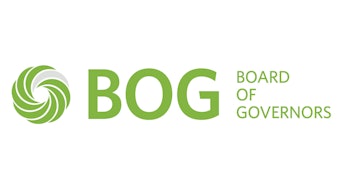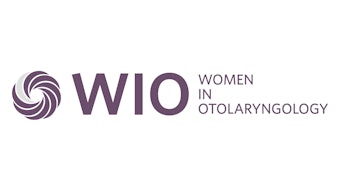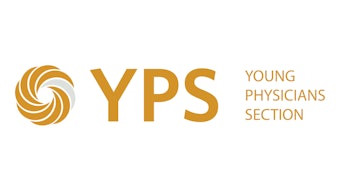The Late-Breaking Lineup for #OTOMTG24
The Annual Meeting Program Committee has selected 50 late-breaking scientific oral presentations from among the many cutting-edge abstracts submitted this year.
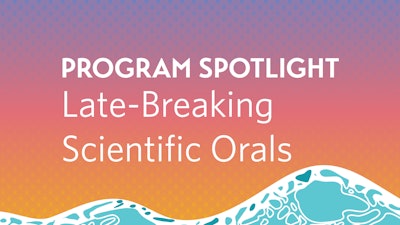
Register for the Annual Meeting today to ensure you don’t miss these groundbreaking presentations and see the full schedule of Late-Breaking Scientific Orals below.
Rhinology and Allergy
1:00 – 2:00 pm | Sunday, September 29
- Effectiveness of Balloon Sinuplasty for Pediatric Chronic Rhinosinusitis
- Do Skin Prick Tests Predict Nasal Provocation Test Outcomes in Perennial Allergic Rhinitis Patients?
- A Minimally Invasive Method for Biomarker Analysis in the Olfactory Cleft: Clinical and Research Applications
- Concept Validation of Diagnostic Panel and Novel Naturally Occurring Drug Molecule for Invasive Fungal Infections
- Olfactory Outcomes Following Endoscopic Sinus Surgery for Chronic Rhinosinusitis With Nasal Polyposis
- Three-Year Outcomes Following Temperature-Controlled Radiofrequency Posterior Nasal Nerve Ablation Treatment for Chronic Rhinitis
- Incidence of Neuropsychiatric Complications in Patients With Rhinitis and Its Relationship With Leukotriene Receptor Antagonist
- Diagnostic Accuracy of Nasal Endoscopy and Contrast Magnetic Resonance Imaging in COVID-19-Associated Mucormycosis
- Temperature-Controlled Radiofrequency Treatment of Patients With Nasal Airway Obstruction: Long-Term Outcomes of a Randomized Controlled Trial
Otology and Neurotology
2:30 – 3:30 pm | Sunday, September 29
- Transtympanic Injection of Antioxidant-Eluting Microparticles for Otoprotection From Cisplatin Toxicity in a Mouse Model
- A Novel Auto-Inflation Device to Treat Pediatric Otitis Media With Effusion: Preliminary Clinical Results
- Tamoxifen Is a Risk Factor for Audiovestibular Symptoms and Sensorineural Hearing Loss
- SPI-1005 (Ebselen) Reduces Low Frequency Hearing Loss After Cochlear Implantation in Guinea Pigs
- Health Insurance Coverage and Hearing Aid Utilization in Older Adults: National Health Interview Survey, 2007–2018
- Automatic Detection of Torsional Nystagmus Using the CAVA System
- Sleep Nystagmus in Asymptomatic Healthy Individuals: A Novel Finding
- Assessing the Impact of Vaccination Status on Meningitis Risk Post Cochlear Implantation
- Endoscopic Versus Microscopic Tympanoplasty: A Single-Blinded Randomized Control Trial
- The Effect of Rurality on Severity of Chronic Ear Disease: A Retrospective Chart Review
Head and Neck Surgery
4:00 – 5:00 pm | Sunday, September 29
- Early Death in T3-T4 Head and Neck Squamous Cell Carcinoma: National Cancer Database Surgical Versus Nonsurgical Comparison
- Prospective, Five-Year Evaluation of Thyroid Function Following Thyroid Lobectomy
- Lower Extremity Assessment for Head and Neck Reconstruction: A Scoping Review and American Head and Neck Society Member Survey
- Surgical Versus Nonsurgical Treatment of Advanced-Stage Oropharyngeal Squamous Cell Carcinoma: A Systematic Review and Meta-Analysis
- Adjuvant Proton Radiation Following Transoral Robotic Surgery for HPV-Positive Oropharyngeal Squamous Cell Carcinoma
- Examining Suicide Risk Among the Head and Neck Cancer Patient Population
- Role of Worst Pattern of Invation-5 as a Prognostic Tool in Patients With Oral Cavity Squamous Cell Carcinoma
- Enhanced Sentinel Lymph Node Biopsy in Head and Neck Melanoma: Evaluating Accuracy and Oncologic Outcomes
- Matter of Survival: Adjuvant ChemoXRT Versus XRT Alone in Surgically Treated HPV-Positive Oropharyngeal Squamous Cell Carcinoma With >4 Positive Nodes
- Elevated Risk of Thyroid Malignancy With Estrogen Hormone Treatment in Biological Male Patients
Facial Plastic and Reconstructive Surgery and Pediatric Otolaryngology
8:00 – 9:00 am | Monday, September 30
- Preservation Palatopharyngoplasty for Obstructive Sleep Apnea Patients With High Modified Mallampati Scores: Clinical and Polysomnographic Outcomes
- Early Feeding After Mandibular Distraction Associated With Improved Outcomes
- A Comparison of Brow Elevation and Complications: Endoscopic Versus Pretrichial Brow Lift
- Reconstruction of Mohs Facial Defects: A Conjoint Analysis of Patient Priorities
- Serum Cotinine Concentration as a Measure for Tobacco Use and Outcomes in Septorhinoplasty Procedures
- Trends in Maxillary Frenulum Pathology and Treatment, 2009–2023
- Investigating Potential Synergies Between Hypoglossal Nerve Stimulation and Nasal Surgery in Obstructive Sleep Apnea
- The Role of Sustainability and Regionalization of Esophagoscopy for Pediatric Esophageal Foreign Bodies
- Relationship Between Adenoid Hypertrophy and Obstructive Sleep Apnea in Craniofacial Microsomia Children: A Retrospective Study
- Radiographic Mid-Facial Volume Changes in Patients on Glucagon-Like Peptide-1 Agonists
The Otolaryngology Community and Systems
9:30 – 10:30 am | Monday, September 30
- Insights From Otolaryngology Applicants: Comparing In-Person and Virtual Residency Interviews
- A Novel Machine Learning Model for Triaging Head and Neck Patient Referrals
- Medicare Advantage Prior Authorization Requirements for Otolaryngologic Procedures
- Mentorship in Otolaryngology-Head and Neck Surgery Training Programs: A Cross-Canadian Survey
- Head and Neck Cancer Screening Value Enhancement Via Machine Learning to Predict Diagnoses
- Artificial Intelligence Model Versus Health Care Providers: Predicting Cochlear Implant Eligibility
- Influence of 25 Signals on the Residency Application Process Among Otolaryngology-Head and Neck Surgery Applicants
- Disparities in Early Otolaryngology Exposure by Gender and Socioeconomic Status
- Triaging Emergency Cases in Otolaryngology Using Different Artificial Intelligence Chatbots
- Sociodemographic Inequities in Pediatric Food-Related Choking and Its Complications
